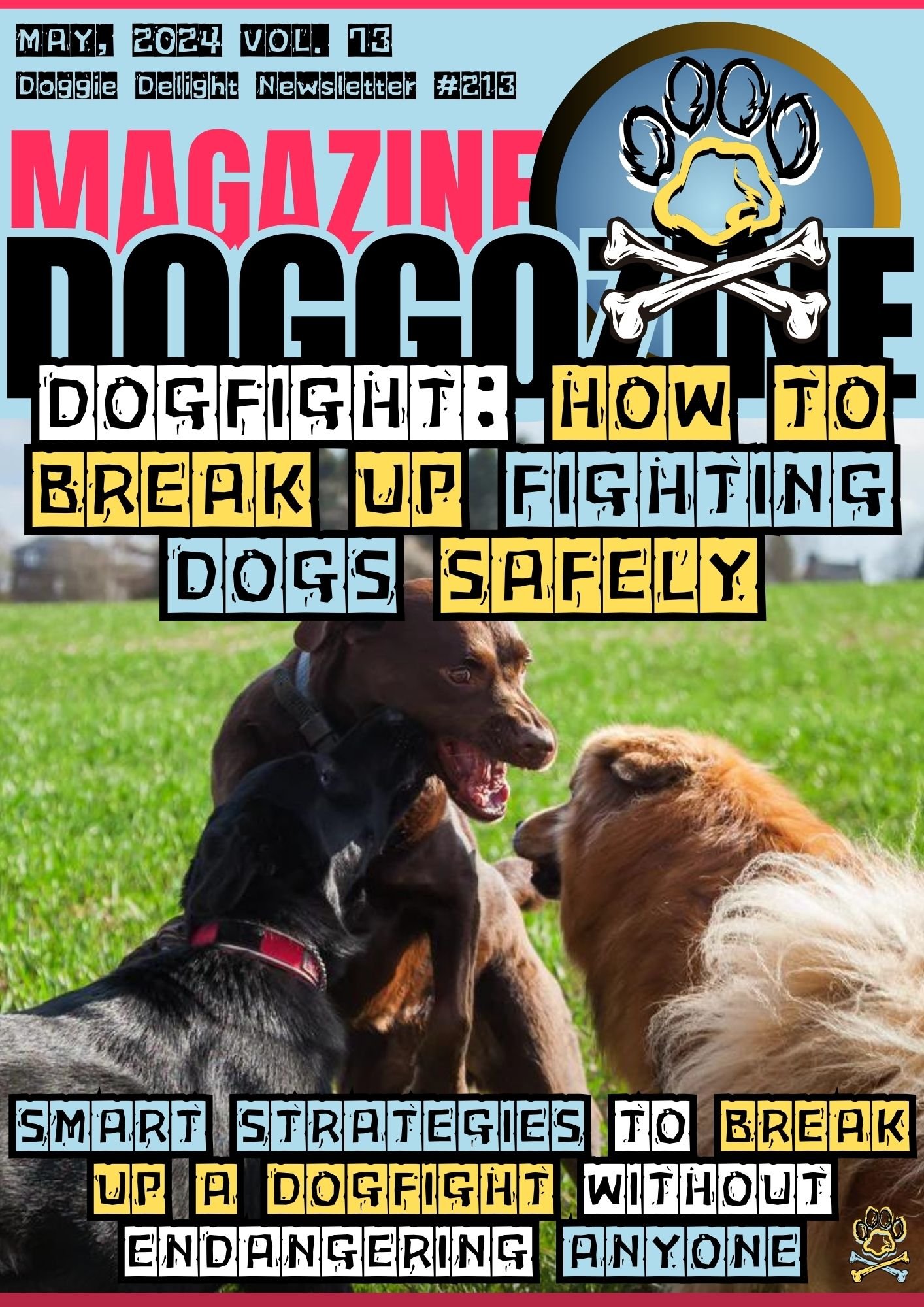
HOW TO SAFELY NAVIGATE AND PREVENT DOGFIGHT?
Are you exhausted from dealing with complex dog behavior? Do you worry about dog conflicts? Imagine a peaceful bond with your furry friends. Understanding their instincts is key to avoiding unwanted aggression. This expert guide unveils essential tips. It will help you master dog behavior and safely handle any dogfight or potential conflicts.
Practical advice for transforming aggressive dog behavior
We offer practical advice tailored for dog owners facing behavioral challenges. Whether you’re dealing with a protective pooch or addressing aggressive tendencies, our insights aim to provide tools for responsible pet ownership.
Join us on this journey to transform your approach to canine behavior. We’ll help you establish a secure environment where dogs and owners thrive. Let’s explore the intricate world of dog behavior together. We’ll pave the way for harmonious coexistence with your beloved pets.
Expert Tips For Mastering Dog Behavior
Recognizing signs of aggression is crucial. Implementing positive reinforcement-based training programs is also important. We have practical advice for dog owners facing behavioral challenges. Our comprehensive insights cover protective pooches and aggressive tendencies. Our actionable strategies equip you with knowledge and tools for responsible pet ownership.
Understanding Dog Behavior Modification
Dog behavior problems can cause stress for dogs and owners. Aggressive dogs pose risks to themselves and others. Understanding dog behavior modification is crucial for addressing these issues. It creates a harmonious relationship between dogs and humans.
Behavior modification involves identifying triggers and reinforcing desired behaviors. Techniques like counter-conditioning and desensitization can change how dogs react to stimuli. Positive reinforcement training builds confidence and trust. Working with a certified animal behaviorist or trainer is recommended.
They can develop a customized behavior modification plan for your dog’s specific needs. With patience and consistency, you can manage and improve your dog’s behavior. Addressing behavioral issues early is essential. It prevents problems from escalating and helps maintain a strong bond between you and your furry companion.
Recognizing Signs of Aggression in Dogs
Recognizing signs of aggression is crucial for preventing dogfight. Dogs may exhibit aggression due to fear, resource guarding, or territoriality. Some common signs include growling, snarling, showing teeth, stiff body posture, and raised hackles. It’s important to pay attention to your dog’s body language and behavior.
Early intervention can prevent escalation and promote a safer environment for everyone involved. Changing a dog’s behavior is an important process. It means understanding why your dog is acting in certain ways. It helps reshape bad behaviors through careful training methods. This process takes a lot of patience and consistency. It also needs a deep knowledge of how dogs think and feel.
For example, some dogs get aggressive when guarding their food or toys. To fix this, you can slowly get the dog used to people coming near these items. You reward the dog for staying calm and not being aggressive. By addressing the root fear or insecurity, the dog learns good things happen when triggers appear.
Good behavior training uses positive reinforcement. This means rewarding your dog for good behaviors with treats, praise, or playtime. Doing this strengthens the bond between you and your dog. It also encourages your dog to make better choices when faced with challenging situations. Positive reinforcement is key for successful behavior modification.
🔑 Key Points: Understanding dog behavior change is vital. It allows you to address aggressive or unwanted behaviors. You do this through specialized training techniques and positive reinforcement. This reshapes problem responses and promotes a harmonious relationship with your dog.
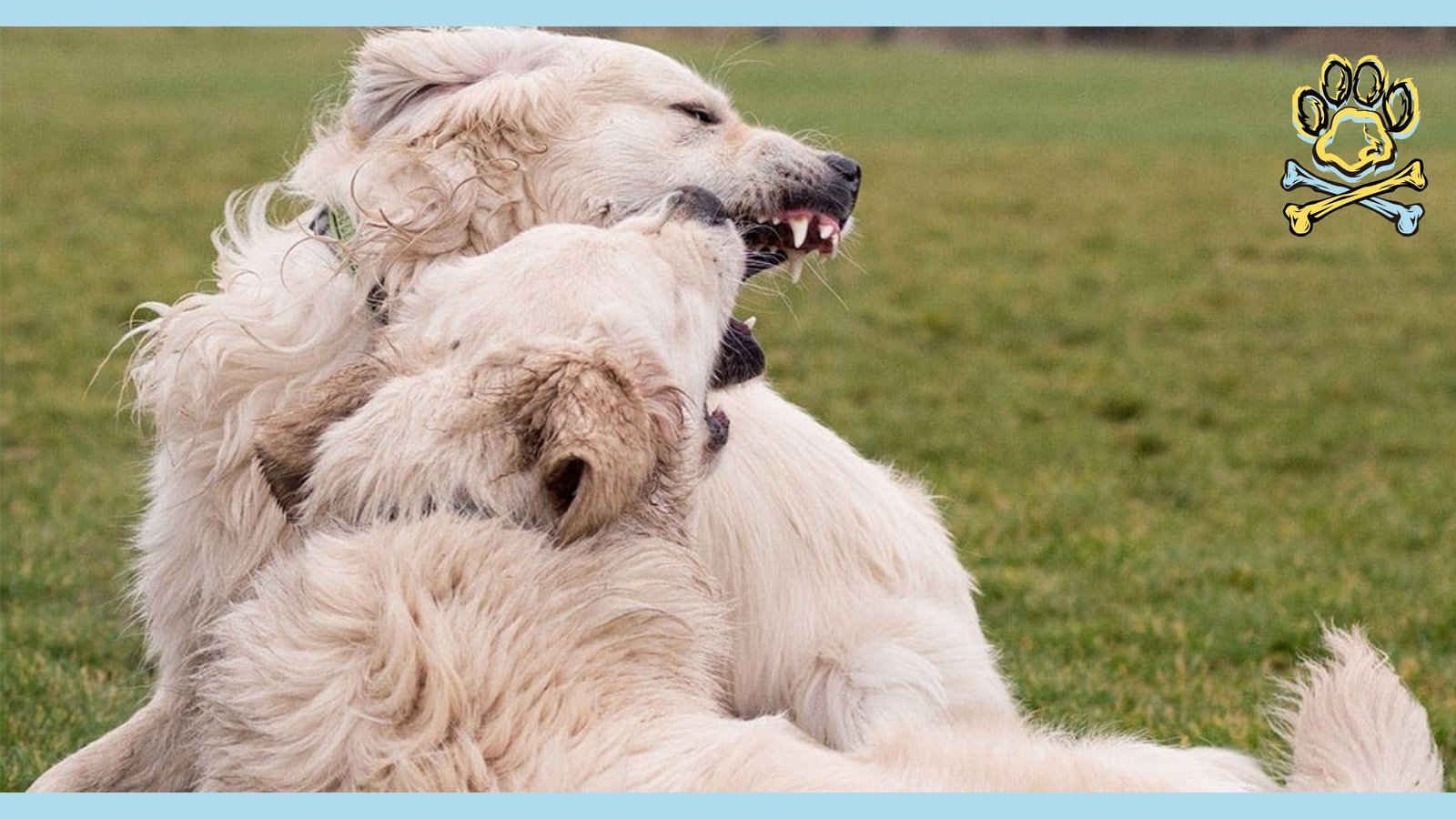
FROM WHAT REASONS DOGS SHOW AGGRESSIVE BEHAVIOR?
There are many possible reasons why dogs act aggressively. It could be due to genetic factors, or things in their environment. Figuring out the root cause of aggression is crucial. It allows you to create an effective behavior modification plan for your dog. Some common reasons dogs become aggressive include medical issues, fear, anxiety, or feeling the need to protect resources like food or toys.
Medical Issues
These issues can also play a role in aggression. For instance, a dog in pain may lash out due to discomfort. Lack of proper socialization is another major contributor to aggression in dogs. Dogs need positive exposure to different people, animals, and environments from a young age. Without this, they may become fearful or reactive in unfamiliar situations.
In some cases, the living environment itself can trigger aggressive tendencies. Dogs that are confined, isolated, or lacking in mental stimulation may develop frustration-based aggression. Proper training, exercise, and enrichment are key to preventing this.
Fear and Anxiety
Many dogs exhibit aggressive behavior when they feel afraid or anxious. It’s a defense mechanism they use when feeling threatened or cornered. This type of aggression is quite common in rescue dogs who have gone through trauma or abuse in their past lives. Dogs react aggressively due to fear for various reasons. It could be because of loud noises, unfamiliar surroundings, or new people.
They might also feel anxious in crowded places or when being handled roughly. To help these dogs, it’s crucial to create a safe, calm environment for them. Slowly introduce new experiences while rewarding positive behavior. Seeking guidance from an animal behaviorist can also be beneficial.
Resource Guarding
Some dogs become aggressive when they feel their resources are being threatened. These resources could be food, toys, or territory. This behavior is known as resource guarding, and it can be directed towards both humans and other animals.
Dogs are protective of their possessions, which they see as valuable. They might growl, snap, or bite if someone tries to take away their food bowl or favorite toy.
To prevent resource guarding, it’s important to teach dogs that people approaching their resources is not a threat. This can be done through positive reinforcement training and creating a relaxed environment during mealtimes or playtime.
Lack of Socialization
Dogs who haven’t been properly socialized as puppies may struggle to understand social cues. They might react inappropriately in social situations, leading to fear-based aggression or overly protective behavior. Socialization is crucial for puppies to learn how to interact with people, other animals, and different environments.
Without proper socialization, they may become fearful or aggressive in new situations. To help these dogs, it’s important to gradually expose them to various sights, sounds, and experiences in a positive way. This can be done through controlled socialization sessions, where they learn that new things aren’t scary.
Pain or Illness
In some cases, aggressive behavior can be a sign that a dog is in pain or feeling unwell. Dogs who are experiencing physical discomfort or illness may become irritable and more likely to lash out. It’s essential to rule out any underlying medical issues if a dog suddenly becomes aggressive. This might involve a visit to the veterinarian for a thorough examination and necessary treatment.
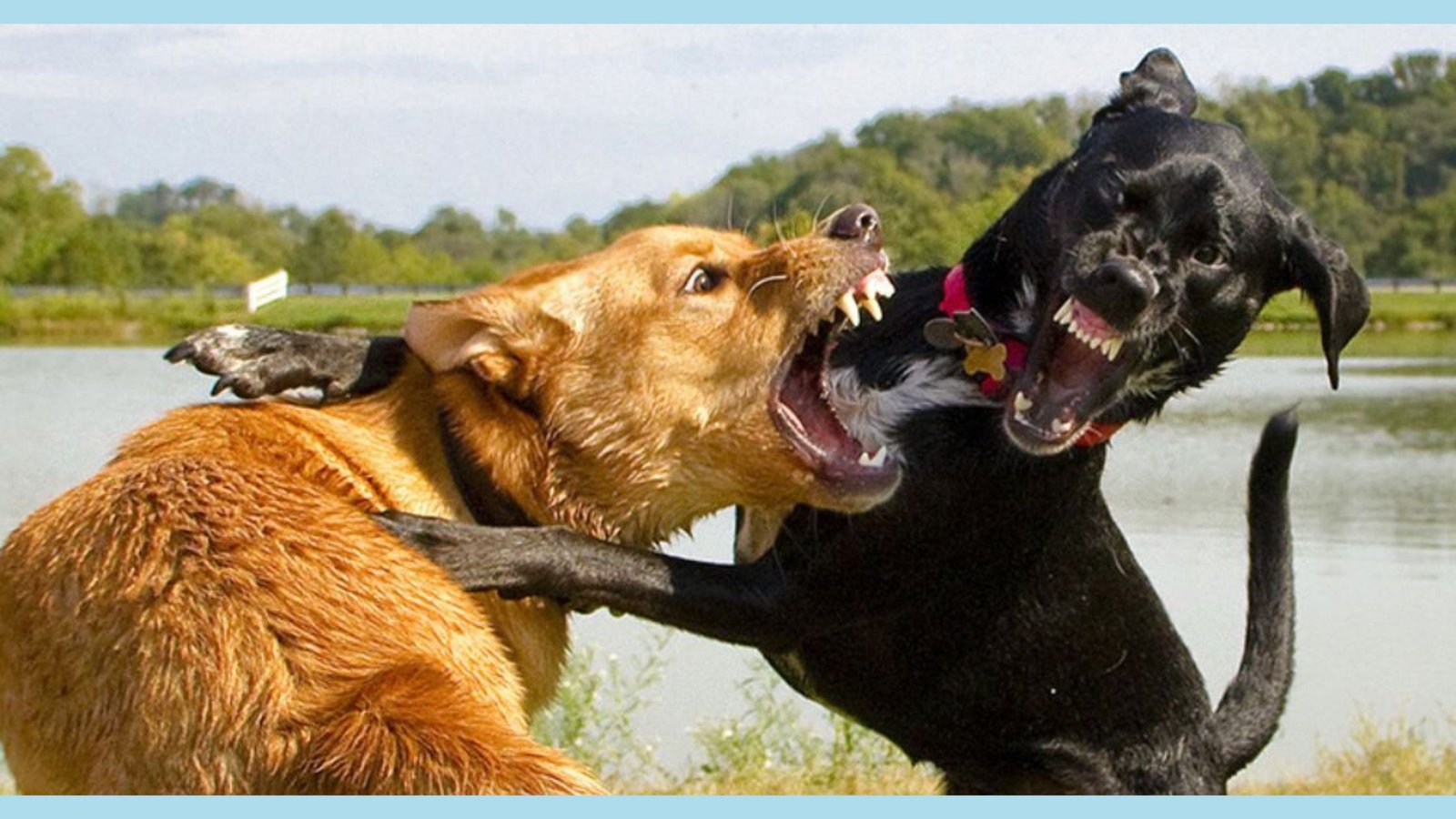
HOW TO IDENTIFY PROTECTIVE AND AGGRESSIVE BEHAVIOR IN DOGS?
Understanding the signs of protective and aggressive behavior in dogs is essential. It helps prevent dogfight and keeps both dogs and people safe.
Some common signs your dog may feel threatened or aggressive include:
Body Language
- A stiff and tense body posture.
- Raised hackles (fur standing up along the back).
- Direct, hard eye contact with you or others.
- Ears pinned back or pointing forward.
- Tail held high and stiff, possibly wagging slowly.
Vocalizations
- Growling sounds coming from your dog’s throat.
- Snarling with bared teeth and an upturned muzzle.
- Aggressive, loud barking at people or animals.
Behavior Changes
- Your dog retreats or tries to hide from people.
- Refusal to follow commands or obey you.
- Snapping or lunging at others in a threatening way.
These signs can vary between dogs. They may also escalate quickly. Give your dog space if you notice any of these signs. Avoid direct confrontation with an aggressive or fearful dog.
🔑 Key Points: Being aware of body language, vocalizations, and behavior changes is vital. It helps identify protective or aggressive tendencies in dogs. This awareness promotes safety and prevents dogfight from worsening.
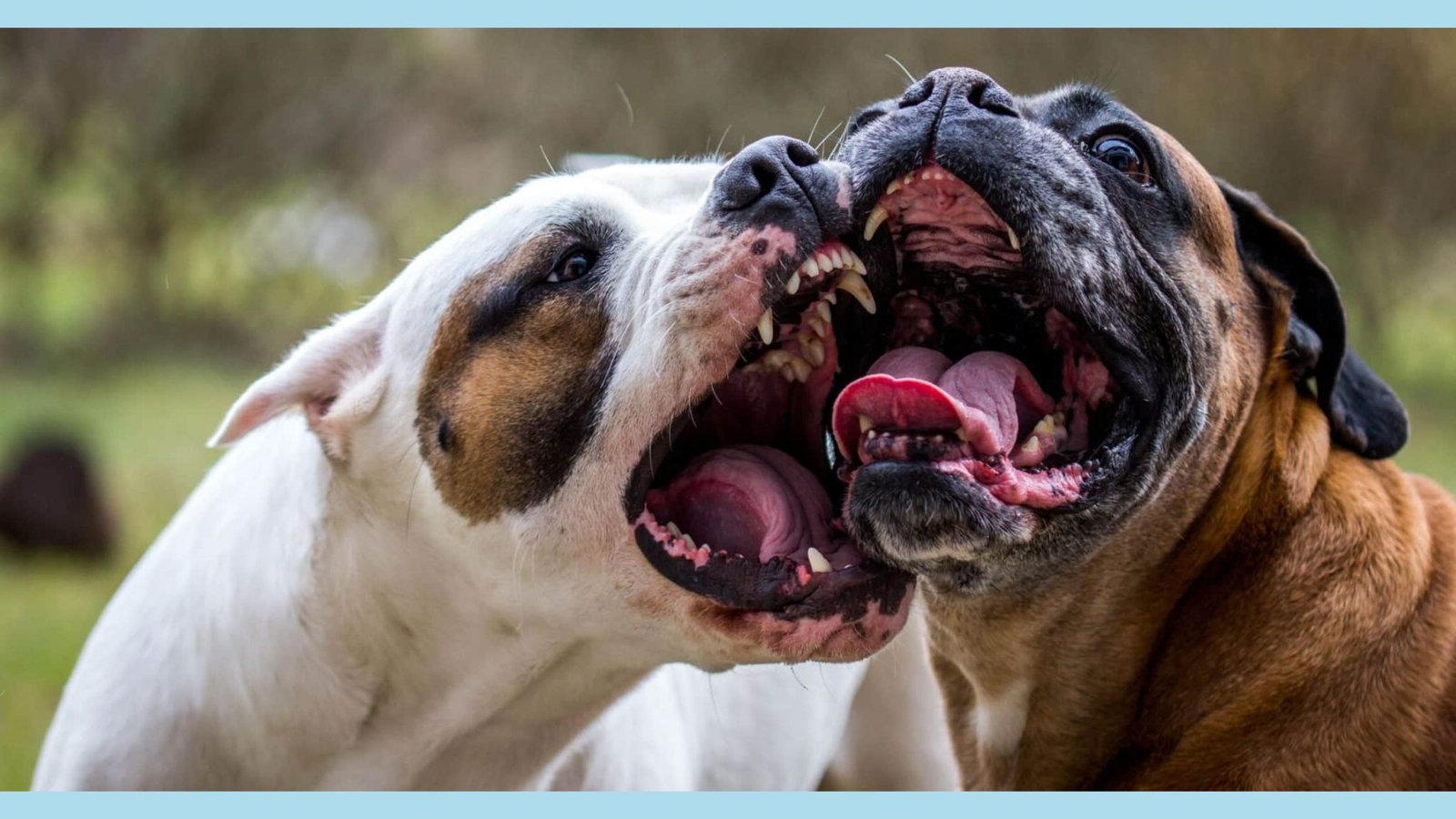
UNDERSTANDING AND ADDRESSING COMMON DOG BEHAVIOR PROBLEMS
Beyond aggression, dog owners often face other behavior issues with their furry companions.
Some common problems and ways to address them include:
Excessive Barking
Dogs may bark excessively due to boredom, anxiety, or territorial instincts. To help reduce excessive barking, provide your dog with plenty of mental stimulation and exercise. Positive reinforcement training can also teach your dog when barking is appropriate and when it’s not.
Destructive Chewing
Dogs love to chew, it’s a natural behavior. But, chewing on shoes, furniture or anything that’s not meant for them can cause trouble. To prevent destructive chewing, provide your furry friend with plenty of appropriate chew toys. Offer tasty chew treats too. Every time your pup chews on their own toy, praise and reward them with a small treat or belly rubs. This positive reinforcement will encourage good chewing habits.
Jumping on People
Pups may jump up when greeting people. It’s their way of seeking attention and expressing joy. But, those muddy paws on your clothes aren’t fun! To stop jumping, simply ignore your dog when they jump up. Only give them attention like petting or treats when all four paws are on the ground. With patience and consistency, your furry friend will learn that jumping doesn’t get them what they want.
Pulling on the Leash
Walking your dog should be fun, not an arm-wrestling match! Leash pulling is frustrating and risky for both of you. But you can teach loose leash walking with positive reinforcement. When your pup walks nicely beside you without pulling, praise and treat them. If they start pulling again, stop walking until the leash is loose. With time and treats, your dog will learn that pulling doesn’t get them anywhere, but walking politely earns rewards.
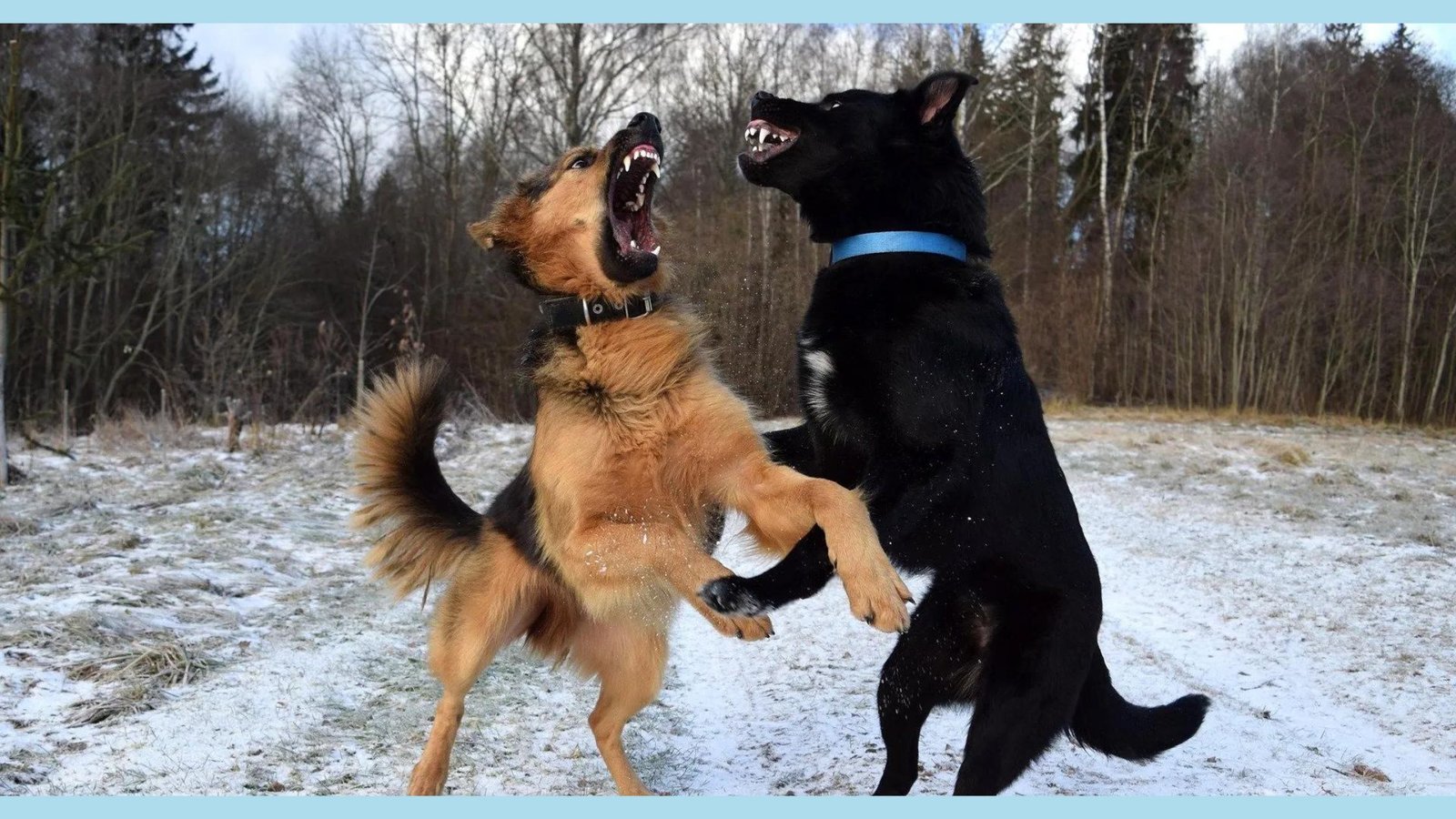
POSITIVE REINFORCEMENT-BASED TRAINING PROGRAM FOR MODIFYING BAD BEHAVIORS
A positive reinforcement-based training program is a highly effective approach. It helps modify bad behaviors in dogs. This method focuses on rewarding desired behaviors. It ignores or redirects unwanted ones. This creates a positive learning environment. It encourages dogs to make good choices. To implement this training program, start by identifying behaviors you want to modify.
For example, if your dog jumps on guests, teach them to sit calmly when someone enters. Break down the desired behavior into small, achievable steps. For jumping, reward your dog for keeping all four paws on the ground when a guest approaches. As your dog masters this, gradually increase difficulty by having the guest move closer or adding distractions.
Always Use Rewards For Wanted Behavior
Treat your dog with tasty snacks as a reward. Verbal praise and petting also work well as rewards. Playing with toys can also reinforce good behavior. Reward your dog immediately after the desired behavior. This helps them connect their actions with the positive outcome. Consistency is crucial for positive reinforcement training. Ensure all family members and guests follow the same training plan.
Use the same cues and rewards to avoid confusing your dog. Modifying bad behaviors takes time and patience. Celebrate successes along the way. Don’t get discouraged by setbacks. With positive reinforcement, you can help your dog develop good habits. It strengthens your bond in the process. Stay consistent, patient, and positive. Your dog will learn to make good choices and enjoy the rewarding experience.
🔑 Key Points: A training approach based on rewarding good behavior is highly effective for modifying problematic habits in dogs. It focuses on reinforcing desired actions and gradually shaping new routines through patience and consistency. This humane method helps build a positive bond between you and your furry friend.
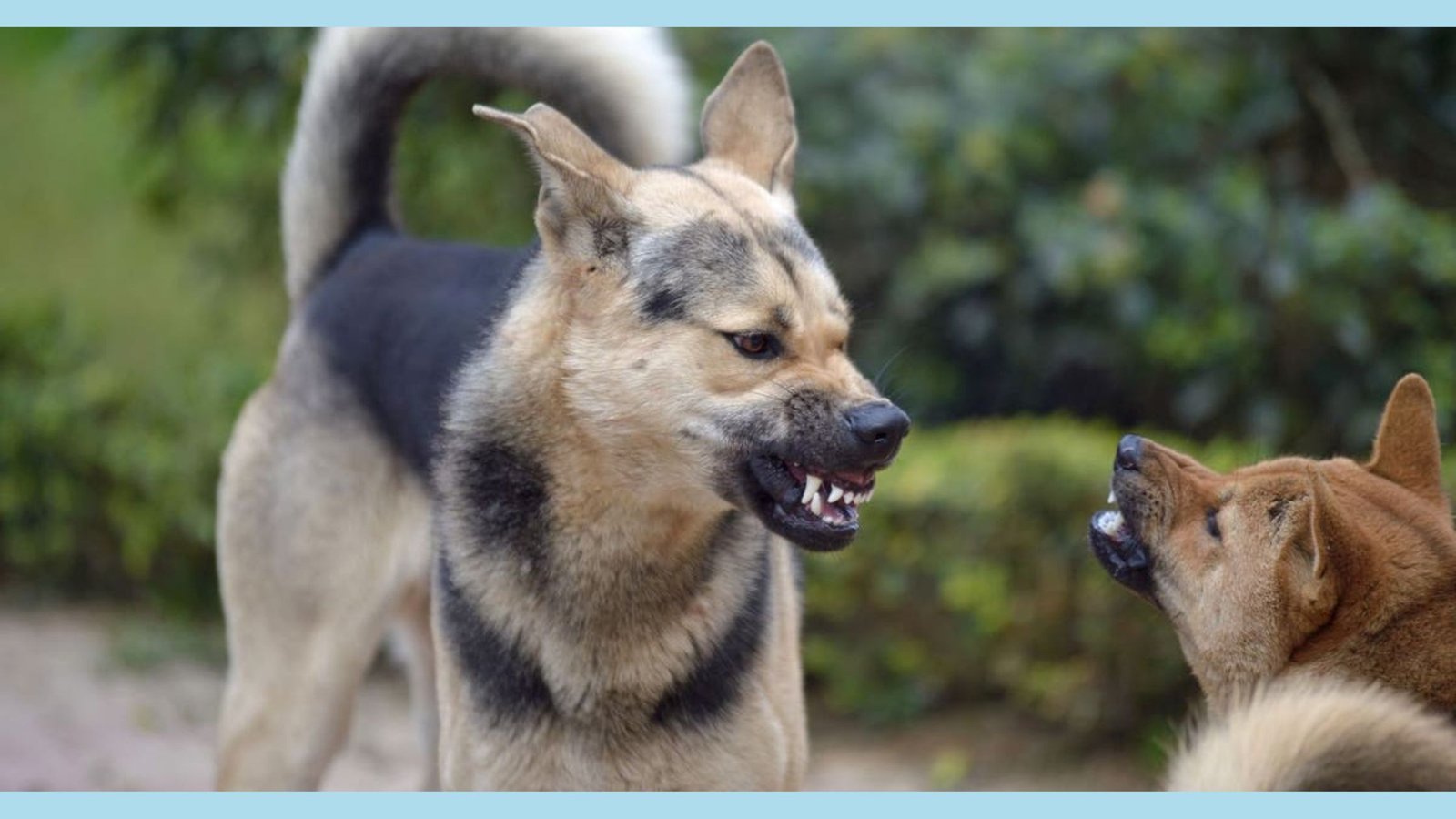
PRIORITIZING SAFETY: SMART STRATEGIES TO BREAK UP A DOGFIGHT WITHOUT ENDANGERING HUMANS OR CANINES
If two dogs get into a dogfight, it’s crucial to prioritize everyone’s safety. Direct physical intervention can be risky and may escalate the dogfight.
Instead, consider these safer alternatives to break up a dogfight:
Noise Distraction to stop a dogfight
Loud, sudden noises can sometimes startle the dogfight enough to disrupt their focus. Try making a jarring sound with an air horn, whistle, or by banging metal objects together. The unexpected noise might distract them and halt the altercation.
Water Spray to stop a dogfight
Spraying the dogs with water from a hose or spray bottle can also help separate them. Aim for their faces, especially their eyes and noses. The disruptive spray might break their concentration and defuse the situation.
Throwing a Blanket or Jacket to stop a dogfight
If you have a thick blanket or jacket handy, throw it over the dogfight. This can disorient them and might give you an opening to safely pull them apart. The barrier can also prevent bites if you need to intervene.
Wheelbarrow Method to stop a dogfight
If you have a partner, you can both approach one dog from behind and grab their hind legs. Then, lift them off the ground like a wheelbarrow. Walk backwards, keeping the dogs separated until they calm down. This method avoids direct contact with their mouths.
Regardless of the method, always prioritize your safety and avoid putting yourself at risk of injury. If the fight escalates or you cannot safely intervene, contact professional help immediately.
Remember, the goal is to break the dogs’ focus and separate them without putting yourself or others at risk. Once the dogs are separated, keep them isolated and assess any injuries. If you’re unsure about how to safely intervene, it’s best to contact professional help, such as animal control or a qualified dog trainer.
🔑 Key Points: When breaking up a dogfight, prioritize safety by using noise distraction, water spray, throwing a blanket, or the wheelbarrow method, rather than direct physical intervention, to minimize the risk of injury to both humans and dogs.
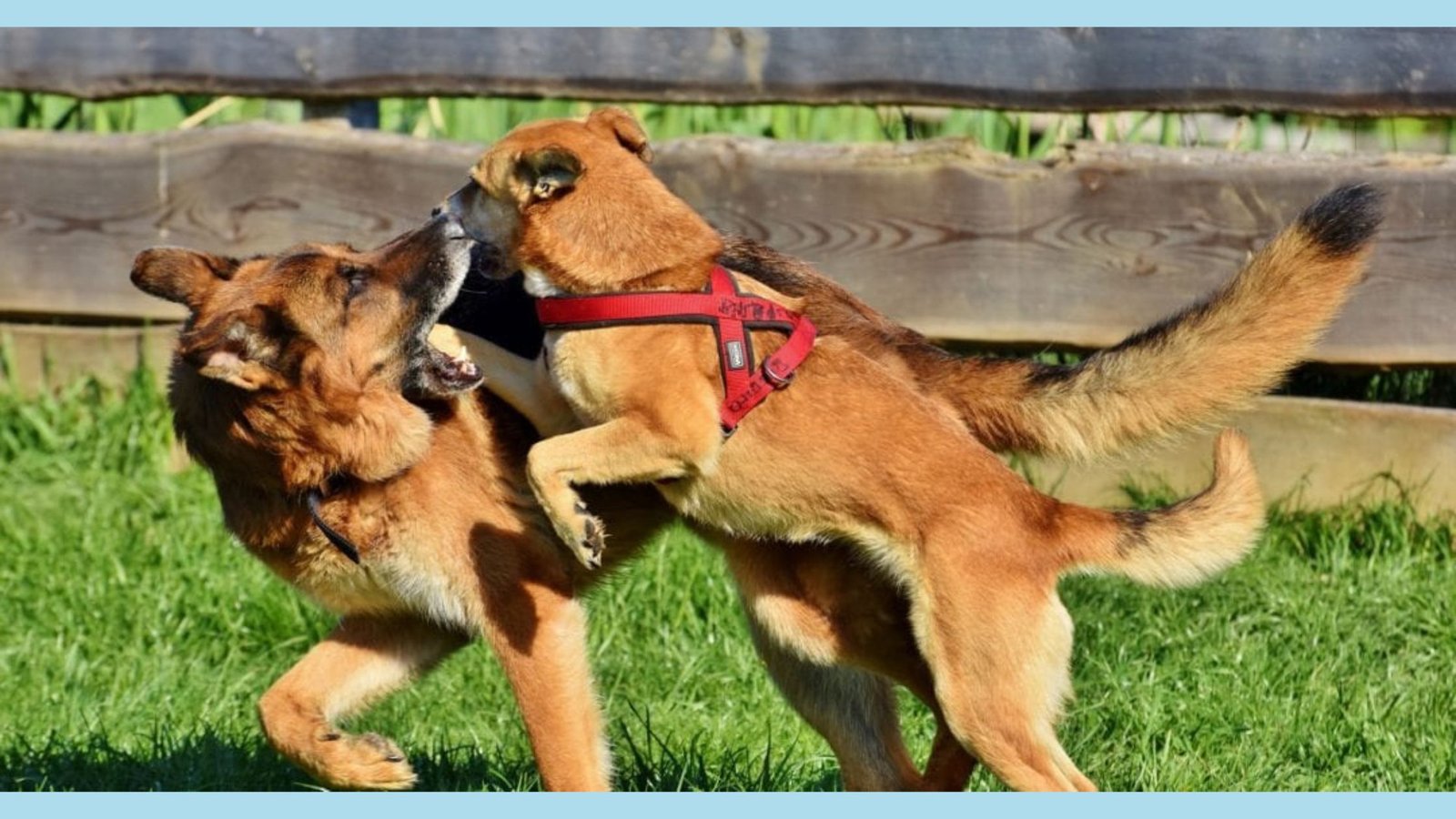
PREVENTATIVE STRATEGIES TO AVOID DOGFIGHT: UNDERSTANDING CANINE CUES
Prevention is always the best approach when it comes to avoiding dogfight. By understanding canine cues and body language, you can recognize when a dog is feeling uncomfortable or potentially aggressive, allowing you to take steps to deescalate the situation.
What are The Common Signs Of A Dog’s Discomfort?
- Yawning
- Lip licking
- Turning their head away
- Showing the whites of their eyes (whale eye)
- Stiff, tense posture
If you notice these signs in your dog or another dog, it’s essential to give them space and avoid pushing them past their comfort level. This may mean crossing the street on a walk, giving them a quiet place to retreat, or simply respecting their boundaries.
Be Aware Of Common Trigger Situations That Can Lead To Dogfight
- Be careful and avoid crowded areas or confined spaces.
- High-energy atmospheres like lively dog parks can sometimes lead to potential conflicts. Dogs may feel overstimulated, heightening their excitement levels. It’s wise to monitor them and intervene if needed.
- Resource guarding situations over prized possessions like coveted toys, tasty treats, or a territory they feel protective of can trigger defensive behaviour. Dogs may growl or snap to guard their “valuables.” Observing early warning signs allows de-escalation.
- Avoiding or carefully managing these common trigger scenarios can minimize the chances of a dogfight breaking out. By being proactive and vigilant, you can prevent escalations before they occur.
Training your canine companion to focus intently on you and promptly respond to basic commands like “come,” “stay,” and “leave it” holds immense value. With solid obedience training, your furry friend becomes more likely to heed your instructions, disengaging from potentially volatile confrontations at your cue. A well-trained, attentive dog grants you better control, enhancing everyone’s safety.
🔑 Key Points: Preventing dogfight involves keenly observing canine body language cues, recognizing and respecting signs of discomfort, steering clear of common trigger situations that may ignite conflicts, and diligently training your loyal companion to respond promptly to basic commands. This multifaceted approach equips you with the tools for better control, deescalation, and ensuring a safe, harmonious environment for all.
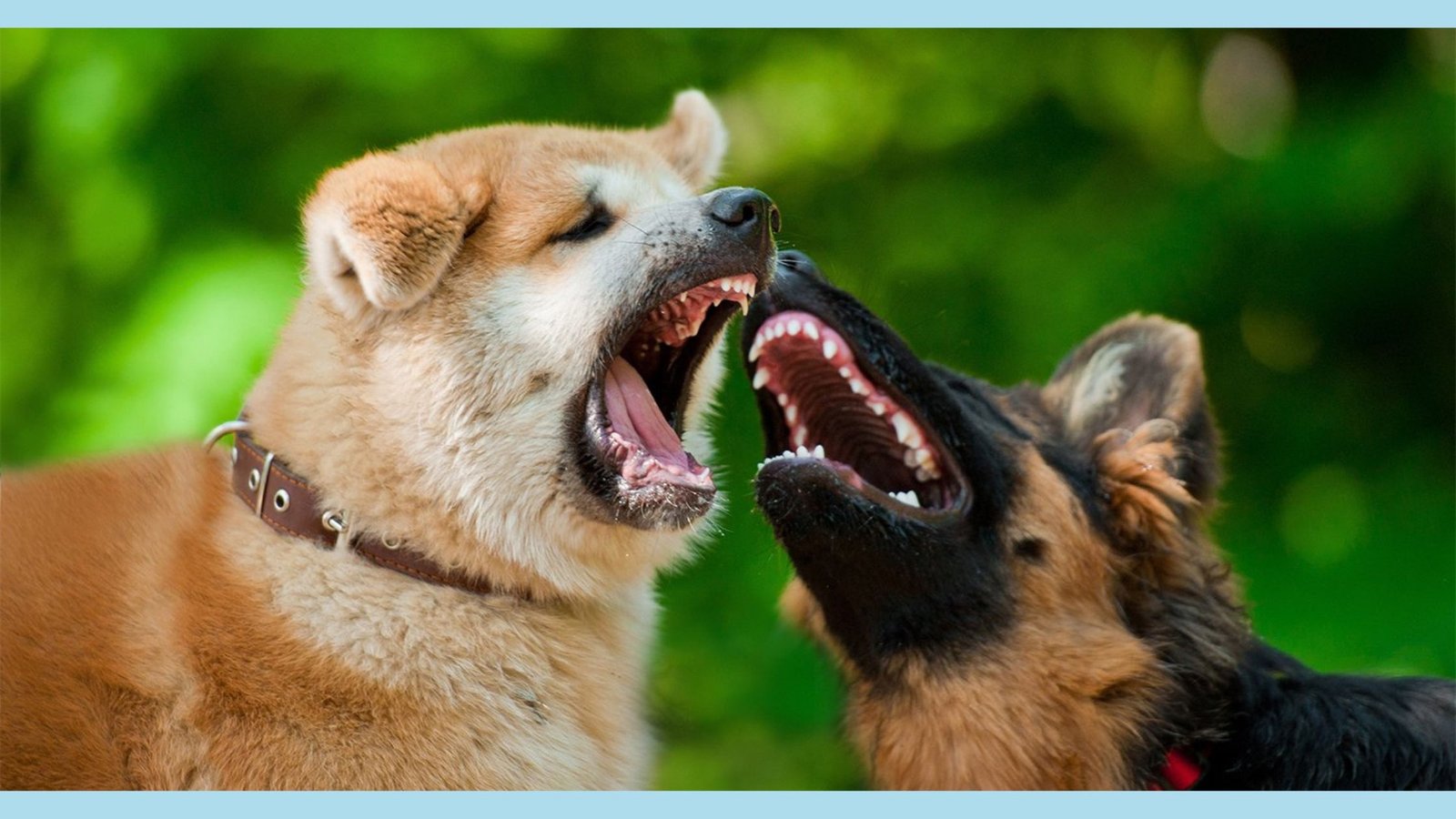
TAILORING TRAINING TECHNIQUES TO SPECIFIC BEHAVIOR PROBLEMS AND DOGFIGHT
When tackling specific behavioral concerns, it’s crucial to tailor your training approach meticulously to the root cause driving the issue. This strategic alignment ensures you’re addressing the underlying motivations fueling the behavior, rather than merely managing surface-level symptoms.
For instance, if you’re working diligently with a rescued dog exhibiting aggressive tendencies, it’s imperative to consider their past experiences thoughtfully. Any potential trauma or mistreatment they may have endured could profoundly influence their current behavior patterns. In such delicate situations, a gradual, compassionate counter-conditioning strategy focused on rebuilding trust and fostering positive associations might prove most effective.
Tailoring Training Techniques Factors To Success
Conversely, if you’re contending with a determined leash-puller, a harmonious blend of positive reinforcement techniques and redirection strategies may yield better results. Teaching the “heel” command firmly yet patiently, while consistently rewarding calm, focused walking beside you, could be an appropriate course of action. By addressing the root cause – be it insecurity, excess energy, or a
When tailoring training techniques, consider factors such as:
- The dog’s age and learning history
- The specific behavior problem and its severity
- The dog’s individual temperament and motivation
- The environment and potential triggers
By taking a customized approach to training, you can more effectively address the root of the behavior and help your dog develop new, positive habits that will last a lifetime.
🔑 Key Points: Tailoring training techniques to specific behavior problems, considering factors like the dog’s background and the root cause of the issue, leads to more effective and long-lasting results in modifying unwanted behaviors.
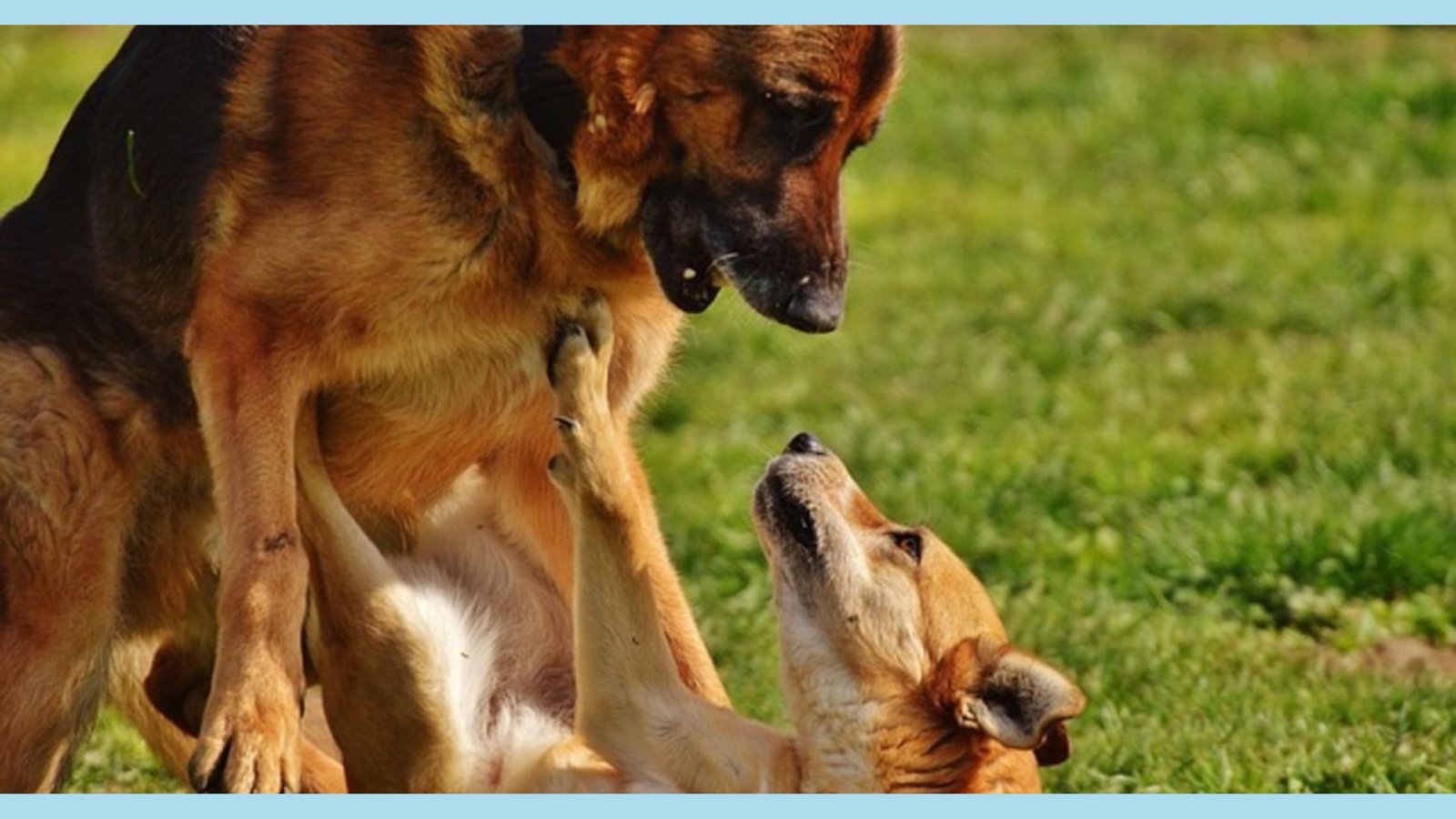
BUILDING TRUST WITH A RESCUE DOG: TACKLING AGGRESSIVE BEHAVIORS
Rescue dogs sometimes act aggressively due to past experiences, lack of socialization, or fear. When dealing with an aggressive rescue pup, use patience, understanding, and positive reinforcement training.
Steps to Help Aggressive Rescue Dogs and Avoid Dogfight
First, create a safe, predictable space for your furry friend. Set routines for meals, walks, and playtime. Provide a comfy, quiet area to retreat.
Next, gradually expose your dog to new people, animals, and situations. Start with brief, controlled interactions in neutral settings. Use high-value treats to form positive associations. Slowly increase interaction duration and complexity as your pup gains confidence.
Teaching alternative behaviors to replace aggression is vital. For example, if your dog barks at other pups on walks, train a calming behavior like sitting or making eye contact. Generously reward positive choices to reinforce the new conduct.
Useful Tools for a Successful Rescue Mission
Employ management tools as needed, such as: Baby gates, crates, muzzles, leashes, and harnesses help prevent aggressive behavior in rescue dogs. Use them while working on their emotions and reactions. Give your rescue dog exercise, mental activities, and positive social time.
This reduces stress and makes training easier. If aggression persists despite your efforts, get help from a dog trainer or behaviorist who specializes in aggressive dogs. They provide tailored guidance.
🔑 Key Points: Be patient and empathetic when modifying aggressive rescue dog behavior. Create a safe space, gradually expose them to new experiences, teach alternate behaviors, meet their needs, and seek professional help if needed.
Creating a Positive Environment for All Dog Breeds
Foster a safe, positive space for dogs to promote good behavior and reduce conflicts. Give them a comfortable retreat area. Ensure family and guests respect their boundaries and avoid interactions that cause discomfort or anxiety. Give your dog lots of chances to exercise and stay engaged.
Have fun play sessions, puzzle toys, and training games. A dog that’s tired and mentally stimulated is less likely to misbehave. Keep a regular schedule for feeding, walks, and playtime. This helps your dog feel secure and prevents stress from unpredictability.
🔑 Key Points: Create a safe, positive space for all dogs by respecting their boundaries. Provide mental and physical activities. Maintain a routine to encourage good behavior and avoid any dogfight.
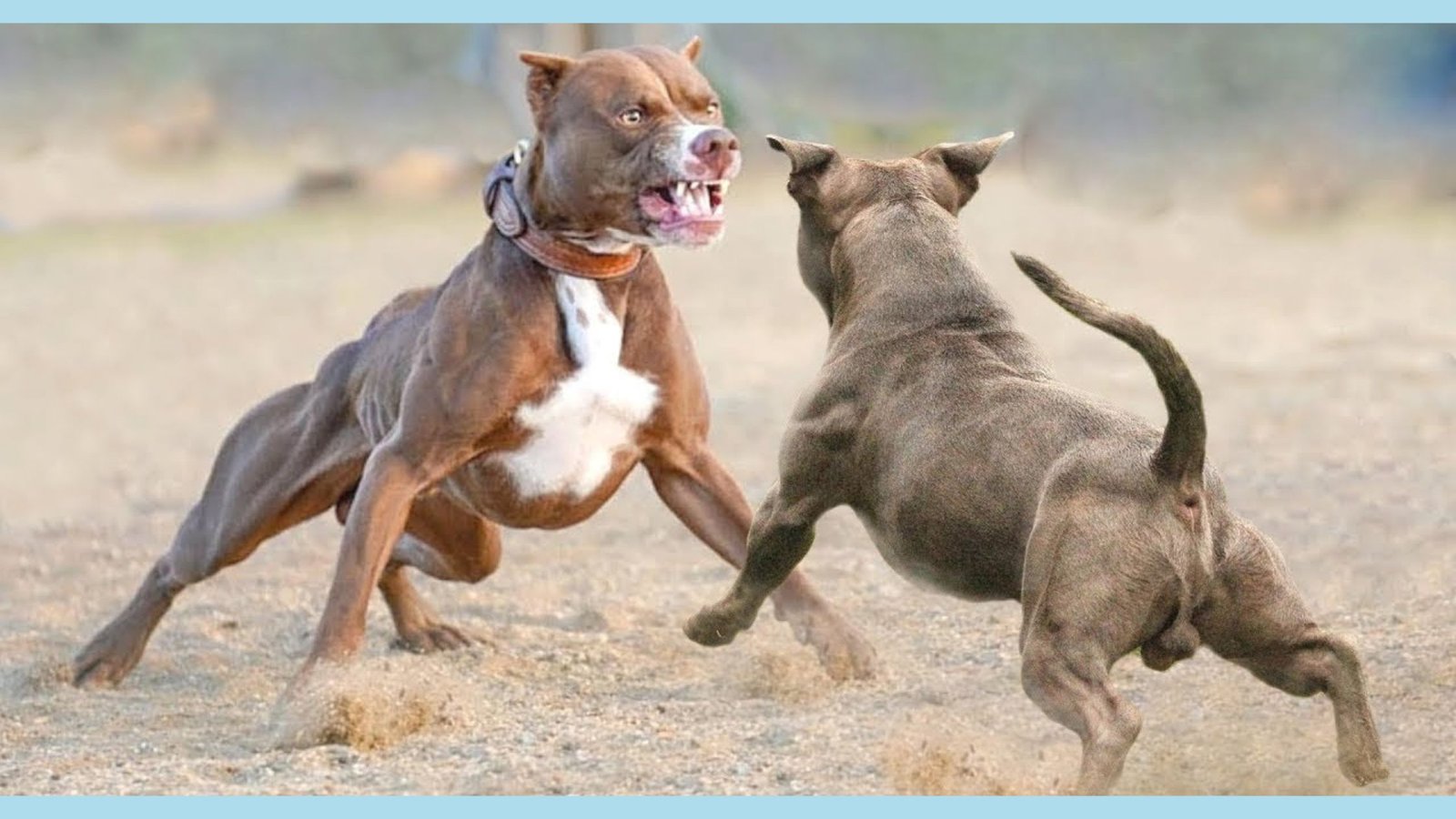
EXPERT ADVICE TO PREVENT WORST CASES OF DOG AGGRESSION AND DOGFIGHT
To prevent worst-case dog aggression, be proactive. Combine understanding, management, and training.
Steps For A Safe Environment
Here are expert tips to keep your dog and others safe:
- Recognize and respect your dog’s limits. If they seem uncomfortable or aggressive, give them space. Don’t push past their boundaries.
- Use positive reinforcement training. Teach alternative behaviors and build confidence in tough situations. Generously reward calm, non-aggressive responses.
- Manage your dog’s surroundings. Minimize triggers and conflicts. Use barriers, avoid high-stress situations, or change walking routes.
Allowing adequate exercise and mental enrichment helps reduce stress levels. This improves your dog’s emotional well-being. If your dog has a history of aggression, consider professional training. A dog trainer or behaviorist can provide tailored guidance. Safety comes first. If unsure about your dog’s reaction, remove them from potential conflicts.
Trust your instincts!
🔑 Key Points: Preventing aggression involves recognizing boundaries, using positive reinforcement training, managing surroundings, providing exercise and mental stimulation, seeking professional help when needed, and prioritizing safety.
The Importance of Vet Visits in Understanding and Managing Dog Behavior Problems Such as Dogfight
Regular vet visits play a crucial role. In some cases, aggressive behaviors may be linked to medical issues, like pain, hormonal imbalances, or neurological disorders. Your vet can examine your dog and run tests. This rules out potential medical causes for behavior issues.
Treating underlying health conditions can improve your dog’s behavior. Even if behavior problems aren’t medical, your vet can guide you. They can refer qualified trainers or behaviorists to help develop an effective behavior modification plan.
🔑 Key Points: Visiting the vet regularly is key. They can spot health issues behind behavior troubles. And help with treatment plans. Or send you to expert trainers.
Using Pro Dog Behavior Experts To Prevent any Dogfight Happen
Getting expert help is super valuable for serious dog behavior issues. Pros give tailored advice and training plans. They support you through the process.
Certified Professional Dog Trainers (CPDTs) are highly trained. They aced tough exams on dog behavior and training skills. A CPDT crafts a custom plan for your dog’s unique needs.
The Takeaway on Preventing Dogfight and Dog Conflicts
Developing a great bond with your pup takes know-how and kindness. You must understand dog behavior deeply. Recognize fear and aggression cues. Address common problems properly. Use positive training made for your dog’s issues.
This boosts good habits while curbing bad ones humanely. Hire pros for help tackling aggressive rescue behavior. Their reward-based methods stop aggression. And build the relationship you want.
While dealing with dog behavior problems, it’s vital to identify separation anxiety. We must adjust walks and yard time properly. Sharing stories of training aggressive rescue dogs successfully is inspiring.
By consistent effort, right techniques, and understanding dogs deeply, we minimize conflicts and dogfight from happening. Thus, we strengthen the beautiful human-dog bond.
If you are like us at Doggozila Magazine and you help stray dogs, abused or abandoned dogs, or any dogs in general on daily basis, than we want to point you to the The Humane Society website where you can take action to stop animal fighting!
In this article by The Humane Society you can learn how to spot the signs and what you can do!
Take action to stop animal fighting, be the voice of the voiceless!









